By: Leyte Center for Development, Inc. (#LCDe)
22 May 2019
San Isidro is a fourth class municipality in Leyte, some 105 kilometers northwest of Tacloban City. Majority of the more than 31,000 people here derive their income from farming and fishing. Life is difficult for most of the population who are tenant farmers and fisher folks. As if this was not enough, the long #dry spell has further exacerbated the poor peasants’ suffering.
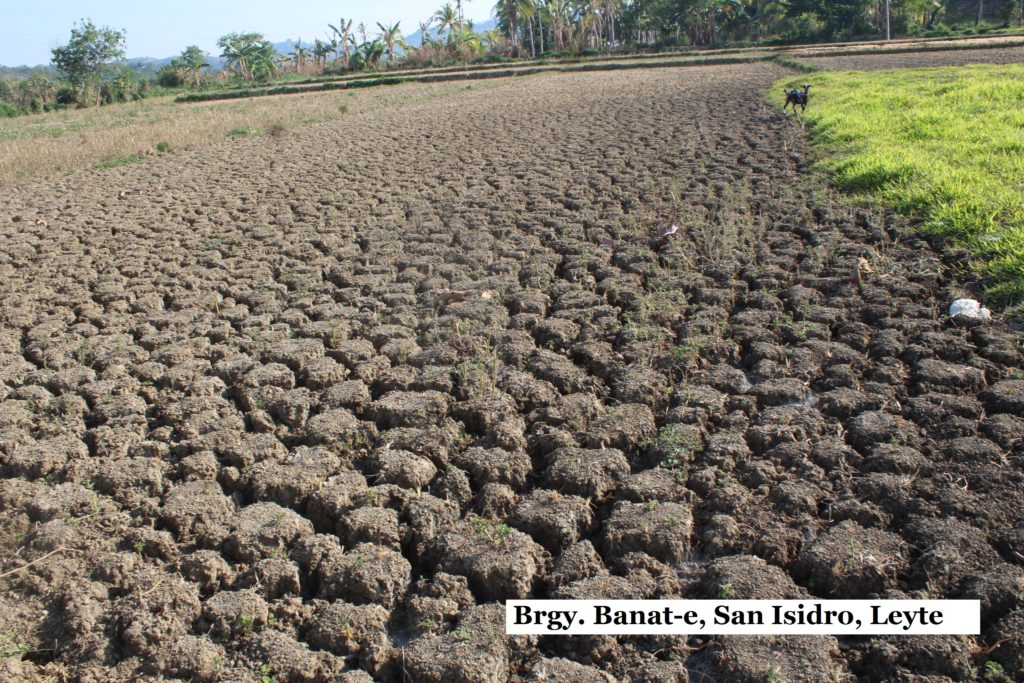
Stories from the Ground
Barangay Banat-e
San Isidro, Leyte
May 19, 2019
Edison Robilla and Donato Apolinar are tenant farmers from barangay Banat-e. Edison is 58 and Donato is 64.
They both plant rice in a one-hectare farm owned by a landlord family named Aznar. Without any serious calamity, they harvest twice a year in this rain-fed farm.
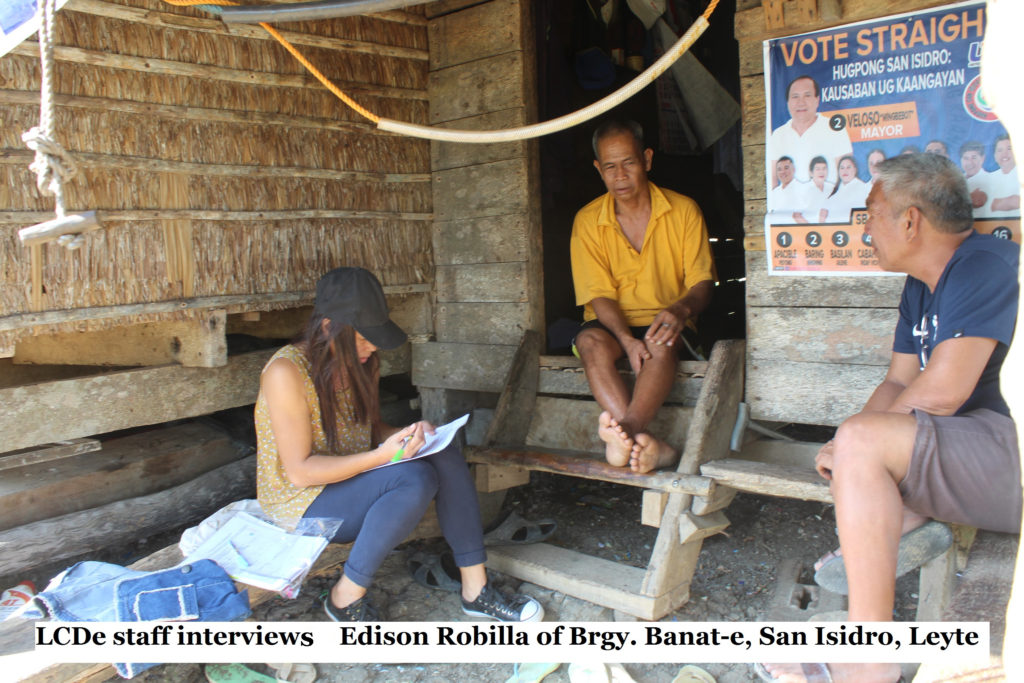
The average harvest for 1 hectare is 40 sacks of palay for one cropping season. Of this, the landlord takes 10 sacks which is ¼ of the harvest.
The 30 sacks left is worth Php 750.00 for each sack. This amounts to Php 22,500.00.
The cost of production that the tenant farmer shoulders with his 3/4 share is as follows:
Land tilling (carabao rent and additional hired labor) Php 7,500.00
Rental of Landmaster (cultivator) 1,800.00
Labor for planting (hiring a labor group or “pakyaw”) 9,000.00
Fertilizer (5 sacks) 6,500.00
Palay seeds for planting (2 sacks) 1,600.00
____________
Total Production Cost Php 26,400.00
As the figures show, their income of Php 22,500.00 is not even enough to cover their production expenses worth Php 26,400.00. Furthermore, Edison and Donato did not even include their labor power converted into cash as part of the production cost.
When asked how they survive, they replied that they borrow money from usurers who demand 10-20% interest rate. The fall into a vicious cycle of repeated borrowing, rendering their children and their children’s children indebted to the landlord who is also the usurer.
For 2019, Donato and Edison were not able to harvest a single grain of palay. The prolonged #drought turned their farm land into a parched patch of land and damaged all the palay they have already planted.
They usually relied on root crops and bananas to see them through the lean months, but now the root crops have also been damaged. There is widespread hunger, even unrest in the communities.
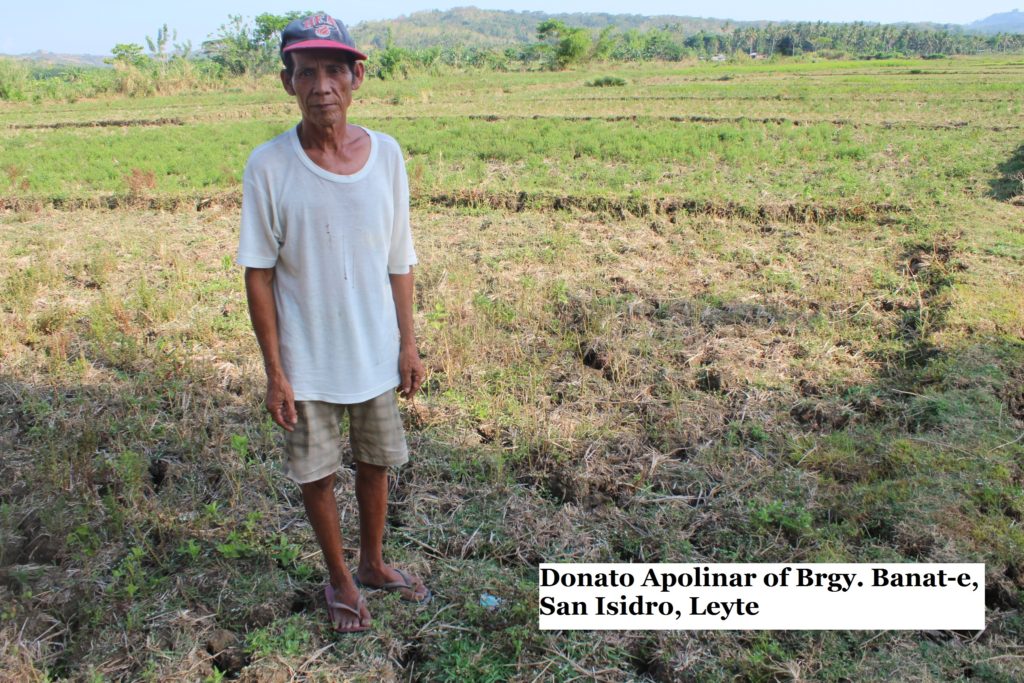
Barangay Taglawigan
San Isidro, Leyte
May 19, 2019
Josefina Toleroso is one of the active peasant women leaders of Barangay Taglawigan in San Isidro, Leyte. Despite her 64 years of age, she is still active in production work, and still finds time for their peasant association.
Like the thousands of farmers and fisher folk of San Isidro, Josefina’s corn farm is affected by the dry spell. Josefina tearfully narrated that they have not had any harvest for 2019. Last November, they barely got three sacks of corn, a far cry from the 25-30 sacks they usually harvest before the impacts of drought hit their farm.
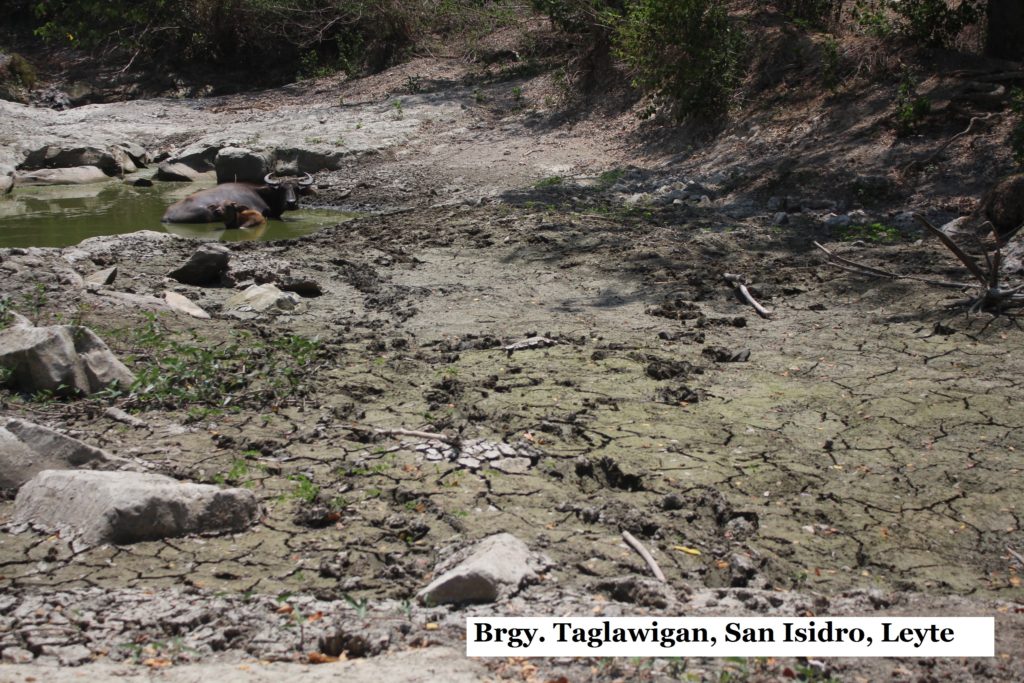
Josefina also had some farm land planted with cassava root crops. Josefina and many other farmers of San Isidro were beneficiaries of CARE Philippines’ root crop production and marketing project some three years ago. But due to this drought, most of the root crops did not survive. Josefina explained that like the other beneficiaries, they had to stop their cassava production and marketing project.
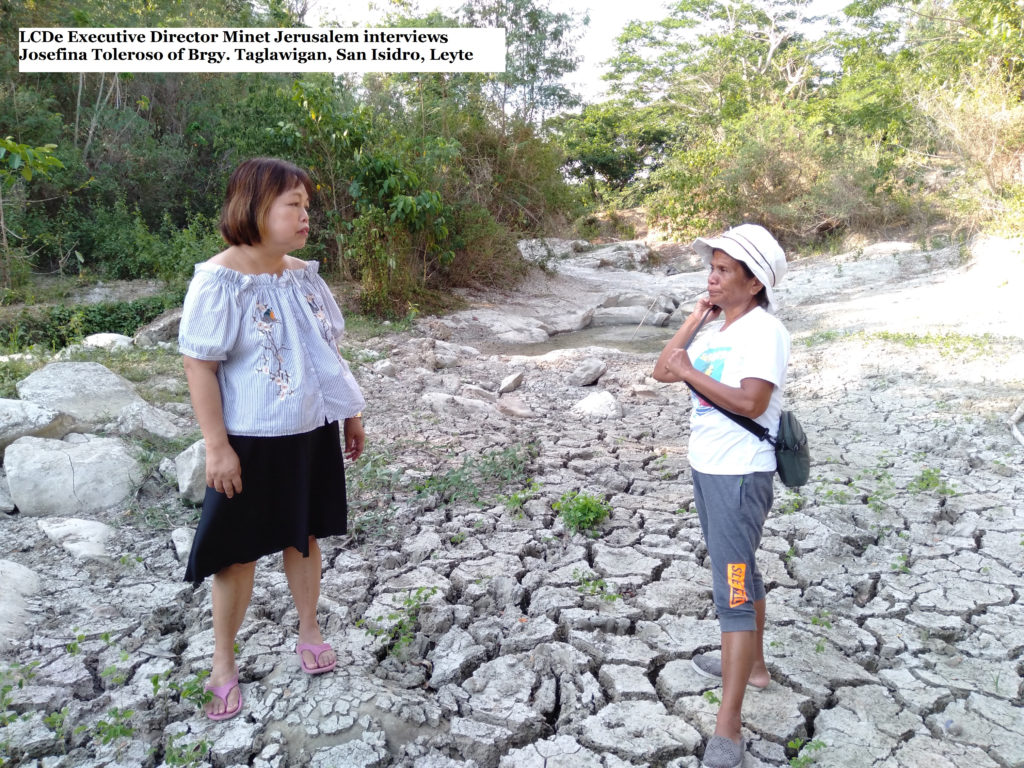
Other Sources of Livelihood that were Also Affected
Fishing as a secondary income source is also heavily affected by the dry spell. The fisher folk narrated that fish go far into the deep sea in this hot weather. And since their fishing boats are small and not designed for deep sea fishing, fish catch is almost nil.
Big trawl boats from elsewhere scraping the sea bed and getting all the fish is also one of the problems of the local fishing communities.
People’s Initiatives
For the poor peasants, being part of an organized group has its advantages. Some 74 farmers started an organization called KAMAS (Kahugpungan sa Mag-Uuma sa San Isidro) in the mid 90’s. Members of KAMAS swelled to more than 1,000 in 2001 in at least nine barangays of San Isidro, Leyte. The members share that KAMAS united them, and together they were able to assert their rights for land to till.
KAMAS members were also able to access livelihood projects from NGOs like Leyte Center for Development (LCDe), since civil society groups and the government prefer working with organized groups for sustainability.
